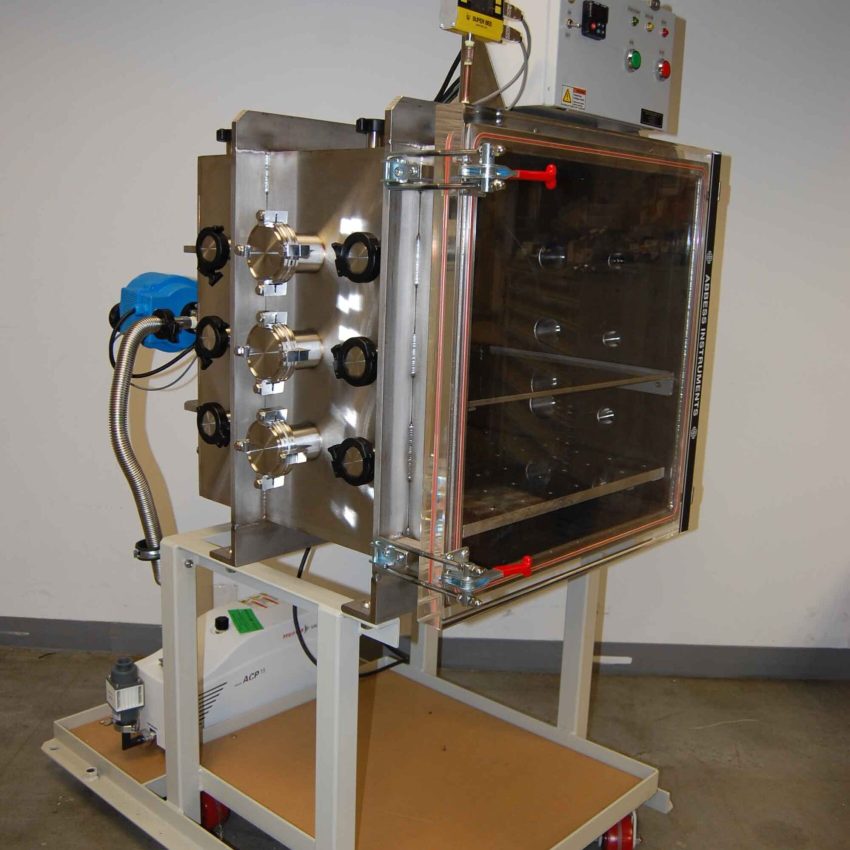
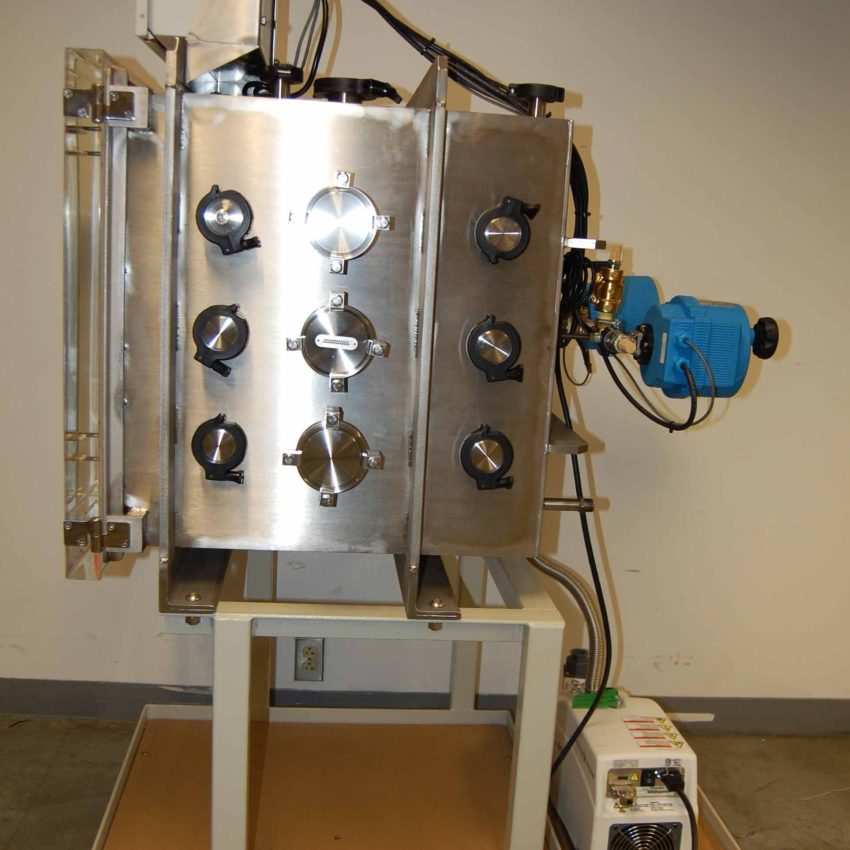
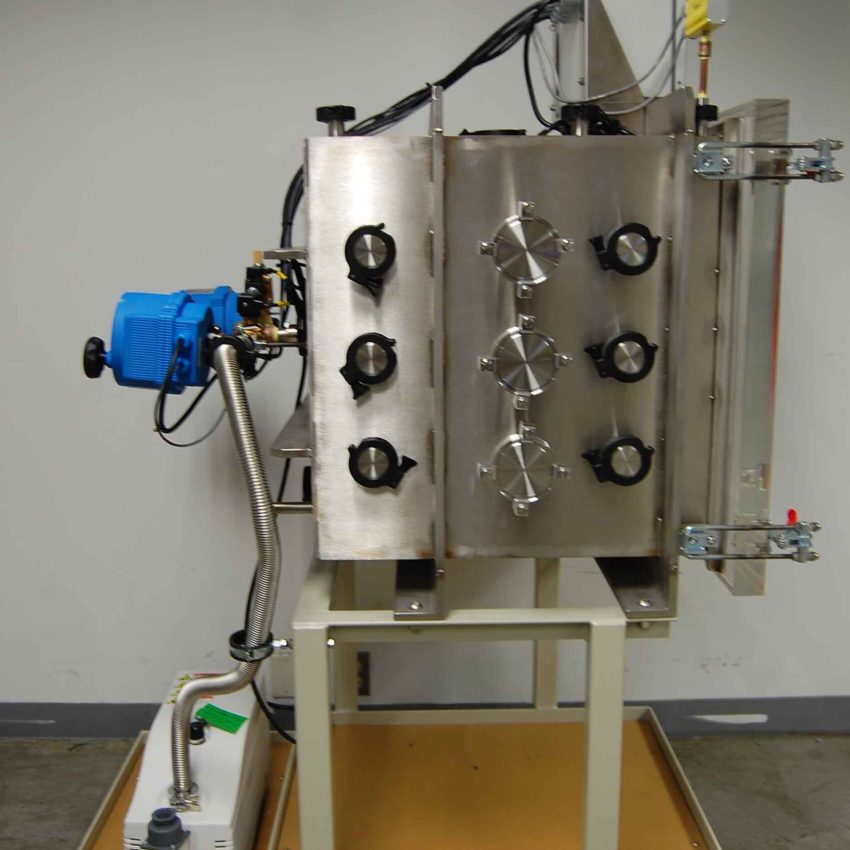
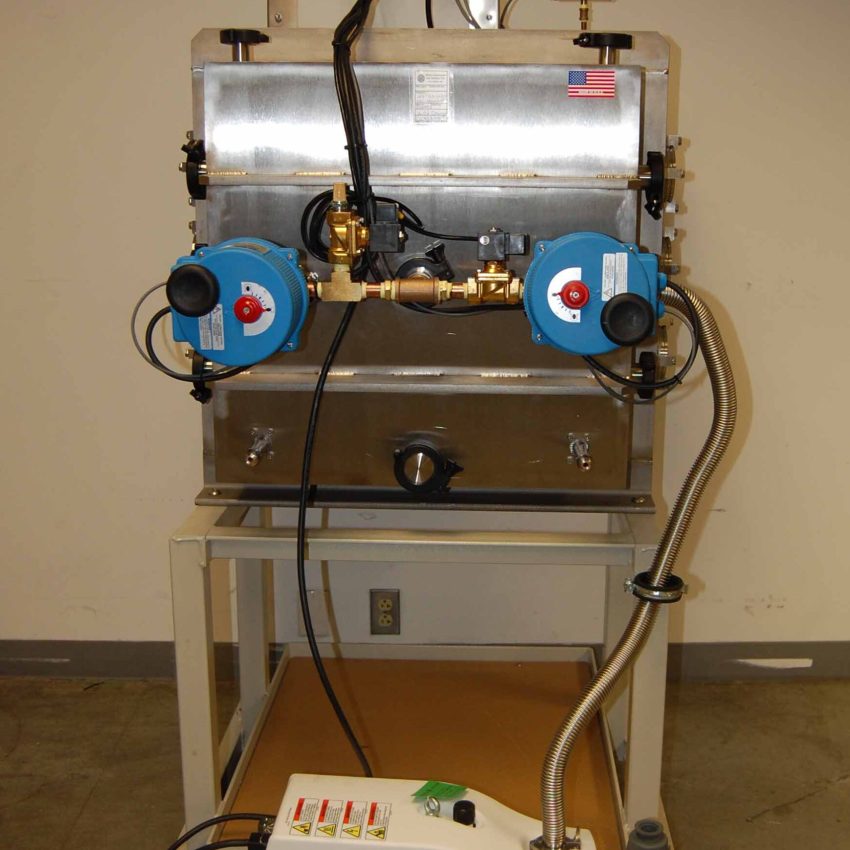
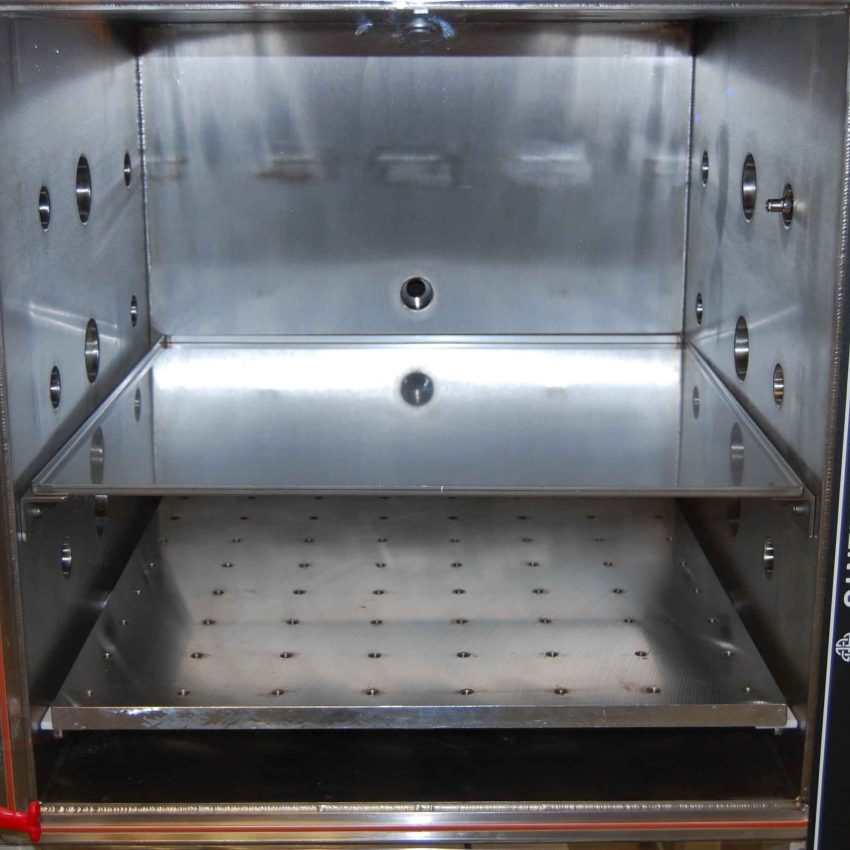
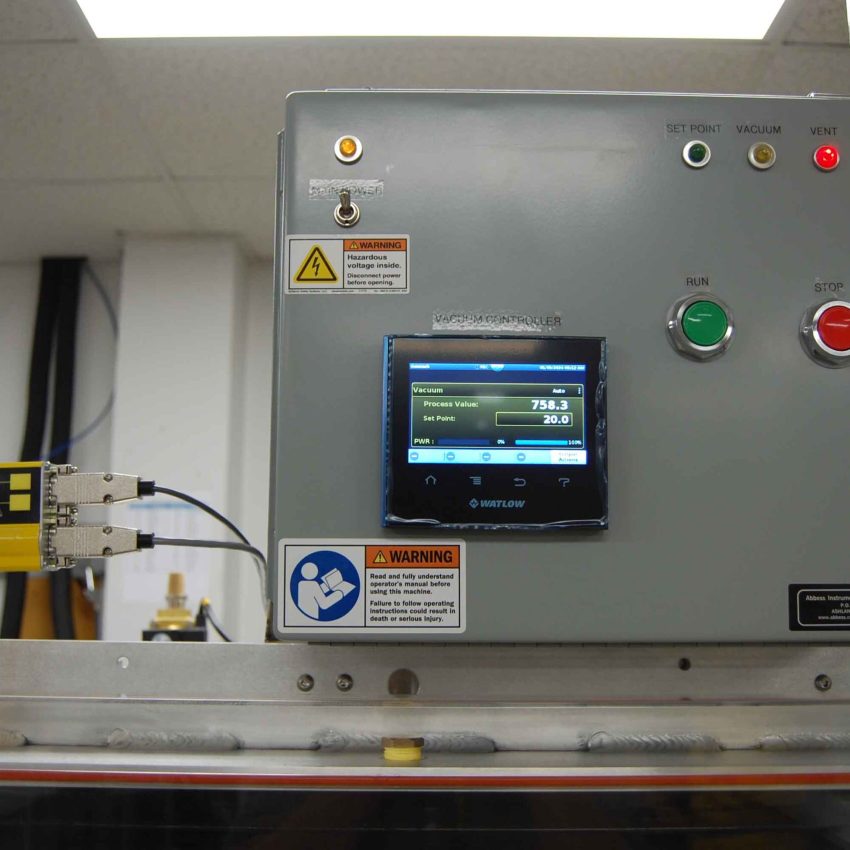
Downloads
- System Drawing (Coming Soon)
- User Manual (Coming Soon)
- Product Brochure (Coming Soon)
- Sample Vacuum Graphs (Coming Soon)
- Sample Thermal Graphs (Coming Soon)
Description
Standard Altitude Simulation System
Abbess Standard Altitude Simulation Systems are designed for precise pressure control experiments, including rapid compression and decompression testing. Operating in the range from Sea Level to 250,000 feet, providing accuracy within the limits of the built-in vacuum pressure gauge sensor. Our fully integrated, turnkey simulation systema feature a welded vacuum chamber, hinged acrylic door with all required valving to precisely control your altitude simulation.
Each system is paired with a vacuum pump customized to meet any of your product cleanliness requirements and vacuum specifications. Chamber venting and pumping is managed by our intuitive valving setup enabling pressurization rates of up to 10 Torr per second—faster than the acceleration felt during freefall.
Operators can select from multiple pressure units, including Altitude, Torr, Atmospheres, Bar, Pascals, or PSI. Our standard systems are designed to withstand pressures well beyond most ASTM and MIL-STD specifications (10E-3 Torr).
| Materials: |
|
| Interior Dimensions: |
|
| Chamber Options: |
|
| Additional Features/Items: |
|
About Abbess Altitude Simulation Systems
Various industries require the design, testing, and validation of parts, components, and electronics that must function under fluctuating pressures or rapid pressure changes. Aerospace and aeronautical engineers, for example, must create components that can withstand the stresses of takeoff, landing, and high-altitude cruising, whether in commercial aircraft or military and acrobatic planes. Aircraft components need to endure emergency conditions such as rapid decompression inside a pressurized cabin, sudden pressurization during unexpected dives, or extreme pressure variations in storm systems.
Testing components at actual altitudes, especially with rapid pressure changes, is both difficult and expensive. An altitude simulation chamber with controlled interior pressure is often a more efficient solution. Our Altitude Simulation Test Chambers provide precise pressure and altitude control, with accurate ramp rates and setpoint control.
All of our Standard Altitude Simulation systems feature a chamber pressurization rate of 10 Torr per second (*pump dependent), which is faster than the pressure changes an object experiences during terminal-velocity free-fall. This pressurization rate meets most ASTM and MIL-STD rapid pressurization standards. For more demanding applications, such as military aircraft or rocket takeoff simulations, smaller chamber sizes or higher pumping speeds are available to meet MIL-STD-810-G rapid decompression standards.


